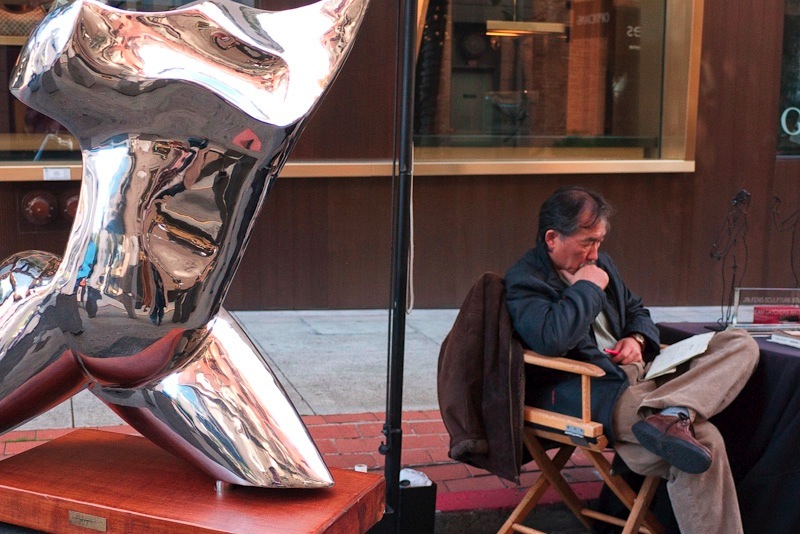If it moves, forget it.
I gushed on about High Dynamic Range photography ages ago here, meaning that the curative aspects of time have done their thing and forced me to reconsider.
You see, unless you have one of those blitzoid megabuck Nikons which take a bazillion snaps in the blink of an eye, HDR is useless if your subject moves. And this is not just the case with the street snapper’s target. A wavering leaf or a flying bird – if the images differ in subject matter, forget HDR. They cannot be merged without ghastly ghosting effects.
And as I’m a street snapper at heart, traditional HDR techniques do not work. Heck, it’s tough enough getting one good snap, let alone the three or more dictated by HDR. So, somewhat unconsciously, I have found that I am using the localized adjustment tools in Lightroom 2 a lot more. When I have a subject with challenging dynamic range, I will underexpose by a stop or two to tame the highlights and then bring back the shadows with a spot of localized exposure adjustment.
Here’s an example of what I am talking about. The underexposed original saw me bringing back the detail in the vendor’s face while leaving the reflective sculpture alone:

Chrome vendor, Maiden Lane, San Francisco. G1, kit lens.
So yes, this is still HDR, albeit with a street snapper’s twist.
Sometimes you can achieve a degree of success with Photomatix HDR on a single exposure, so never exclude the possibility of its use. That example is an extreme case, a more subtle use of the software can just make an otherwise fairly dull photograph – slightly less dull?
However, I agree that in most cases, the tools in Lightroom can be used to engineer the tonal range required without any need for yet another app.